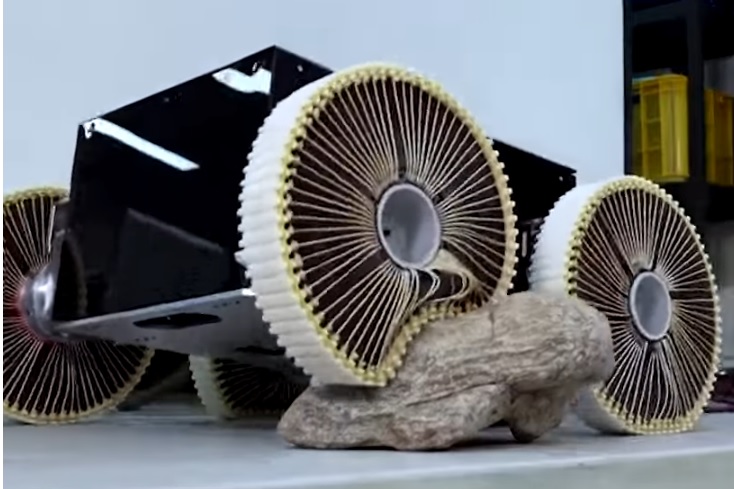
(Photo : KIMM)
Morphing Wheel
- South Korea's KIMM team has developed a 'morphing' wheel that can navigate various obstacles, potentially transforming mobility for wheelchair users and robots.
- The wheel, inspired by the surface tension of water droplets, can adjust its form to overcome impediments.
- The team envisions applications beyond wheelchairs, including unmanned delivery vehicles and industrial robots.
- The morphing wheel has been successfully tested on a prototype wheelchair and a device moving at speeds up to 30 kph.
In an era where technology is ceaselessly advancing, a team of researchers from the Korea Institute of Machinery and Materials (KIMM) in South Korea has made a groundbreaking invention. They have developed a 'morphing' wheel that could potentially redefine mobility. This innovative wheel, designed to navigate a variety of obstacles, could transform the lives of wheelchair users and redefine the capabilities of robots.
The morphing wheel is an engineering marvel, capable of rolling over obstacles up to 1.3 times the height of its radius. This means that a wheelchair equipped with these wheels could navigate kerbs, humps, and even staircases with relative ease. The implications of this are profound, particularly for individuals with mobility impairments who often face significant challenges in navigating environments not designed with their needs in mind.
The concept behind the morphing wheel is inspired by the surface tension of water droplets. Much like how a droplet of water can transition from a solid to a fluid state when it encounters an obstacle, the morphing wheel can adjust its form to overcome impediments.
The Morphing Wheel: Beyond Wheelchairs
The potential applications of the morphing wheel extend beyond wheelchairs. The KIMM team envisions unmanned delivery vehicles equipped with these wheels, capable of taking the stairs to deliver food and groceries right to your doorstep. This could revolutionize the delivery industry, making it more efficient and accessible.
Moreover, the morphing wheel could also be used with two and four-legged robots. Currently, these robots are limited in their movement efficiency and are susceptible to vibration. However, with the morphing wheel, they could carry payloads that require stable movement in industrial settings. This could significantly enhance their utility in various industries, from manufacturing to logistics.
The KIMM team, led by principal researcher Song Sung-hyuk, aims to make the morphing wheel viable for speeds up to 100 kph, equivalent to the speed of an average car. This ambition underscores the potential of the morphing wheel to transform not just individual mobility devices like wheelchairs, but also larger vehicles and machinery.
The Future of Mobility: The Morphing Wheel
Song Sung-hyuk, who is also a member of KIMM's AI robotics research team, highlighted that wheels developed for similar purposes, such as non-pneumatic or airless tires, have flexibility but are limited in their ability to overcome obstacles. The morphing wheel, with its unique design and functionality, offers a solution to this limitation.
The team has already demonstrated the capabilities of the morphing wheel with a prototype wheelchair. The wheelchair, mounted on morphing wheels, successfully climbed stairs with 18-cm steps with a life-size dummy sitting in it. The team has also tested a device mounted with the wheel at speeds of up to 30 kph.
The morphing wheel has garnered significant attention, even featuring as the cover article of the journal Science Robotics in August. This recognition is a testament to the potential of the morphing wheel to transform mobility and robotics.









